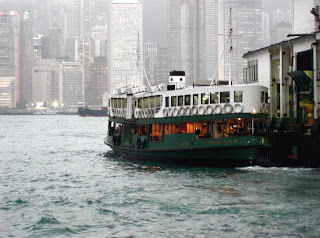(January 21)
The day began with a trip to the Temple of Literature.

The temple of literature (
Văn Mieu) was built in the mid-to-late 11th century AD to honor Confucius, and housed Vietnam's National University. Students learned great philosophical works such as the four books (the Great Learning,the Doctrine of the Mean, the Analects of Confucius, and the Mencius). In order pass the imperial exam, each student would be examined by the emperor himself. Graduates were honored by carving their names on tall tablets set atop stone turtles.




After Văn Mieu, we ate at KOTO, a rather unique restaurant we discovered in our guide. "Know One, Teach One" or KOTO was set up as part of a project to give street kids homes and education. The students learn English and get work skills, in this case, running a restaurant,coffee house, pub, and events hall (it has five floors). The food was very good, and the service solicitous. And our waitress's English cursive is far better than mine! My wife discovered ginger and lemongrass tea, something we will have to try at home.
One of our good friends, on one trip to Asia,visited the embalmed remains of both Mao and Ho Chi Minh (I think she missed Lenin), and dubbed it the "pickled dictators tour." Most museums here are closed on Monday, so we had an excuse, but to be honest, having seen Mao many years back, I have had my fill of preserved leaders.
We did, however, have a lovely long walk up to the mausoleum grounds,in search of the one-pillar pagoda,which we didn't quite find (until later), perhaps because some of the grounds were closed. It was a lovely walk though. We made it up to Ho Tay, the West Lake, which is far larger than Hoan Kiem. It is considered very desirable lake-front property, and we watched a couple dozen kayakers practicing. The air was much better today, thanks to rain and a bit of a breeze, so we enjoyed the view until it became too chilly and then headed back to where we are staying via cab.
And stopped at Diva Cafe. Diva is an art cafe with high ceilings, andthe walls had watercolor paintings and pottery (glazed wine vessels),and some hanging vegetables. We had some Bia Hanoi (beer), and I had Pho Ga (the chicken version of rice noodle soup), while my wife had pork Bun Cha. Bun Cha meat is served like Chinese tie-ban, or like fajitas, on a sizzling iron plate, so that the sauce (a little like hoisin) caramelizes on the pork. It is served with rice and wheat noodles, basil, lettuce, shredded carrots, and a sweet chili thin dipping sauce. Bun Cha, like Pho, is a traditional dish that everybody eats, and everyone cooks with a slightly different approach, so we will have to try it often!
We keep noticing the differences between our experience in China and our experience here. Probably the biggest difference is the way people treat us. In China, I felt often like I was a zoo animal on display. Everywhere we went, people stared. Here, we may still stand out, but people don't make a big deal out of it. Sure, vendors want to sell their wares, cyclos and taxis want passengers, and so on,but for the most part people let us be. People seem generally happy,and we we go to a nicer restaurant, there are usually local Vietnamese patrons sitting alongside tourists, so it seems like many folks have money to spend.
And there is definitely something to be said for all the patisseries and good coffee!
After all the walking it was time to relax for a bit. We hung out at the house with my wife's family. And later that evening had a most un-Vietnamese meal of pirogi and potatoes.




































